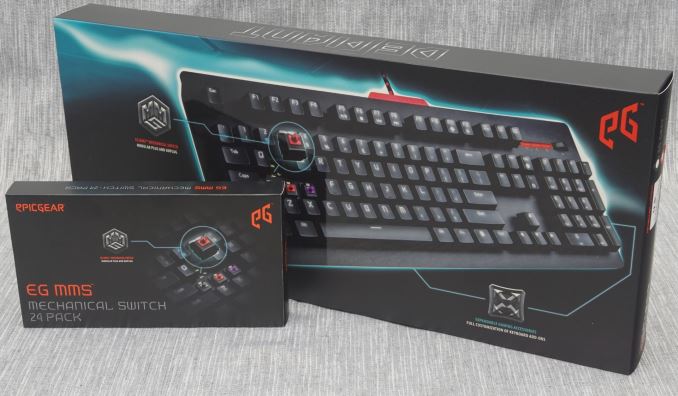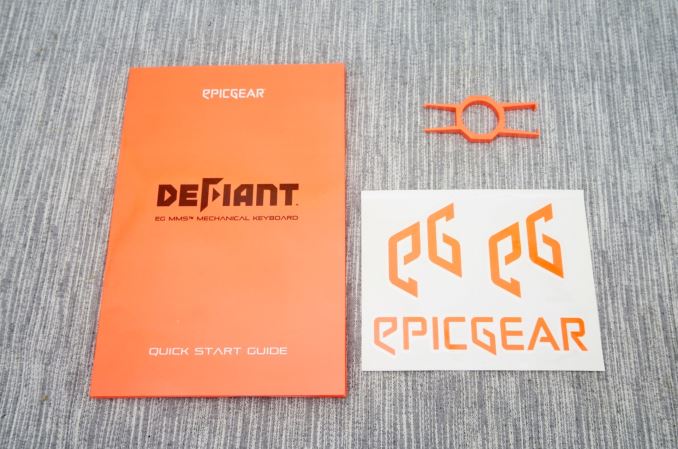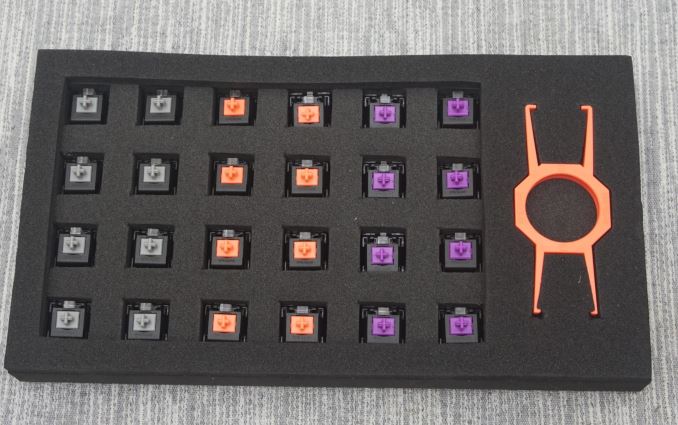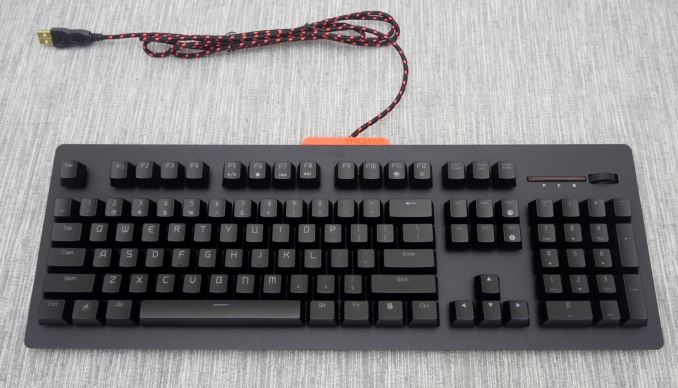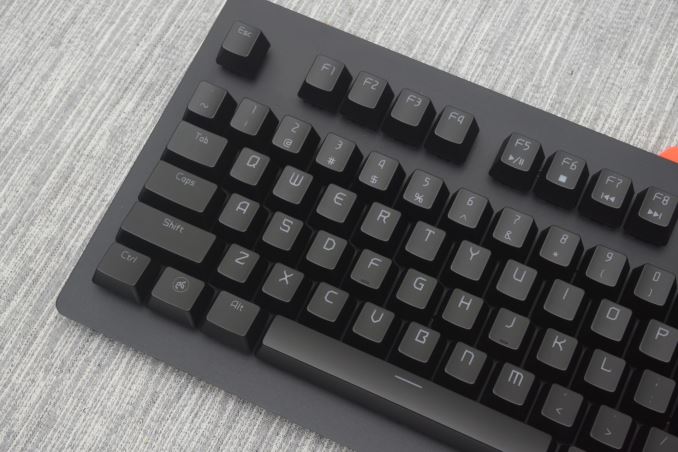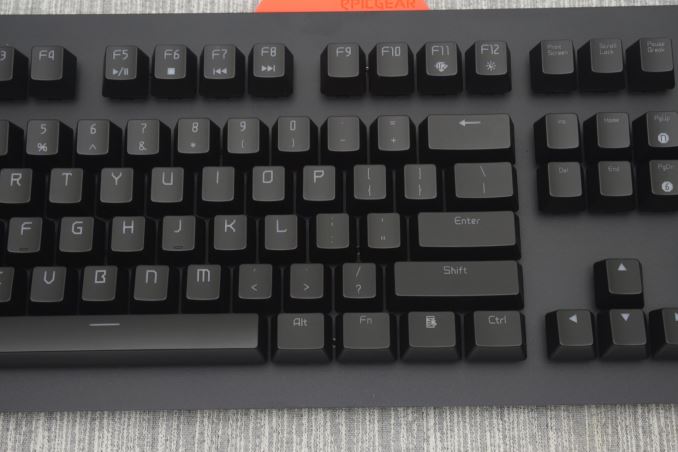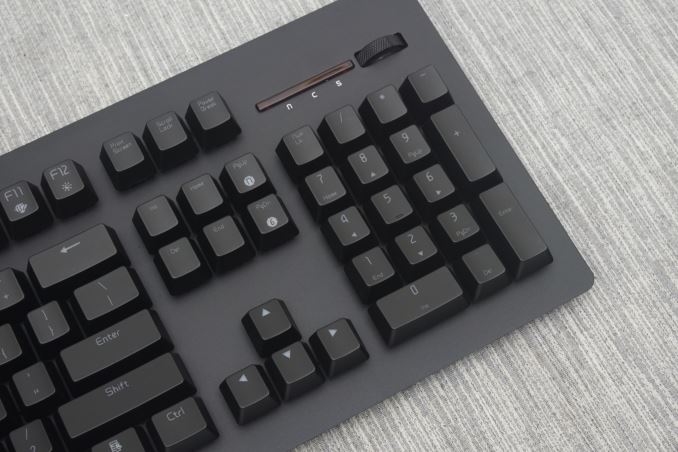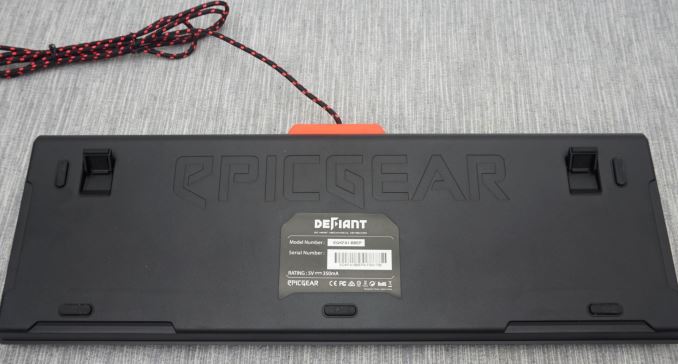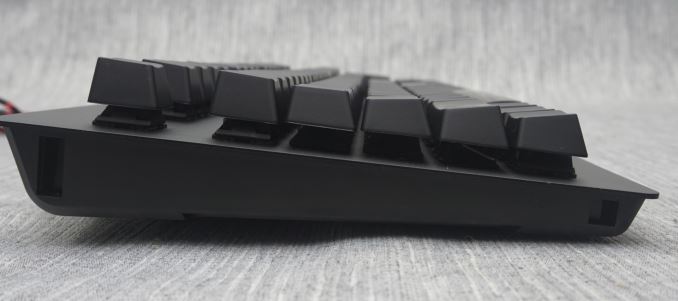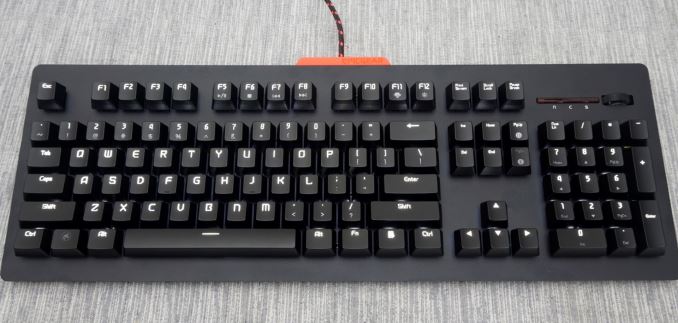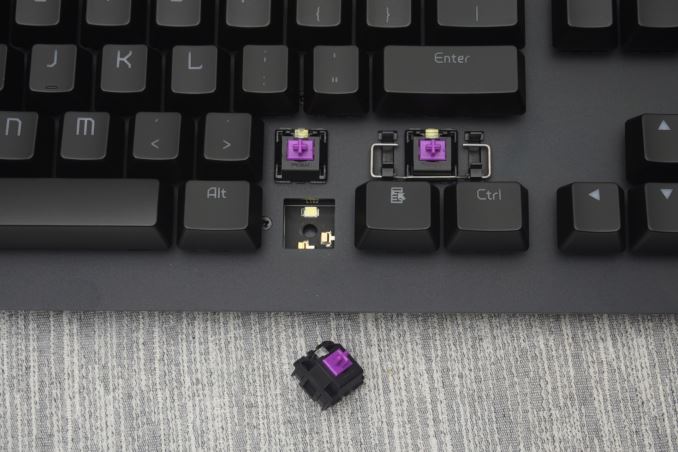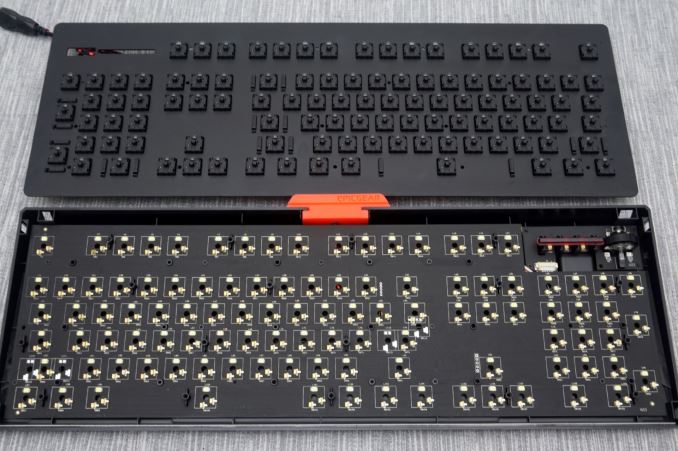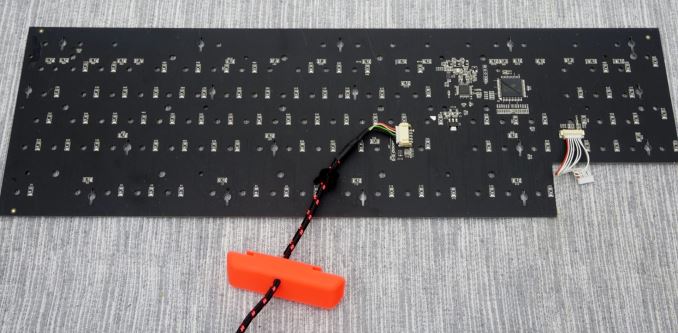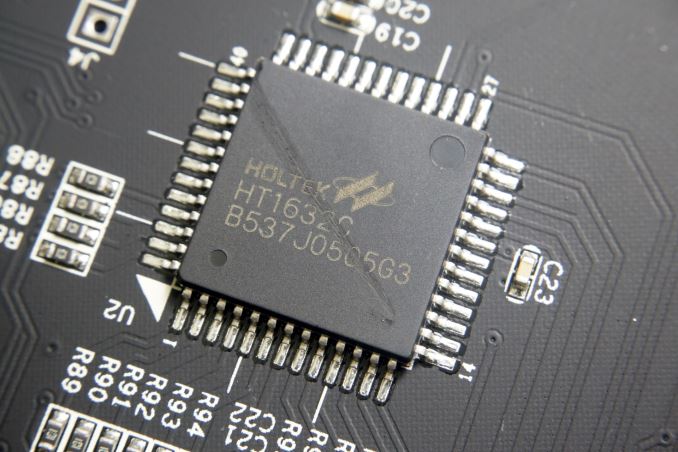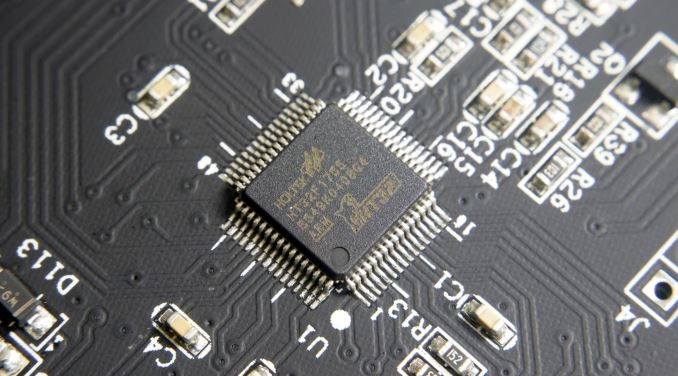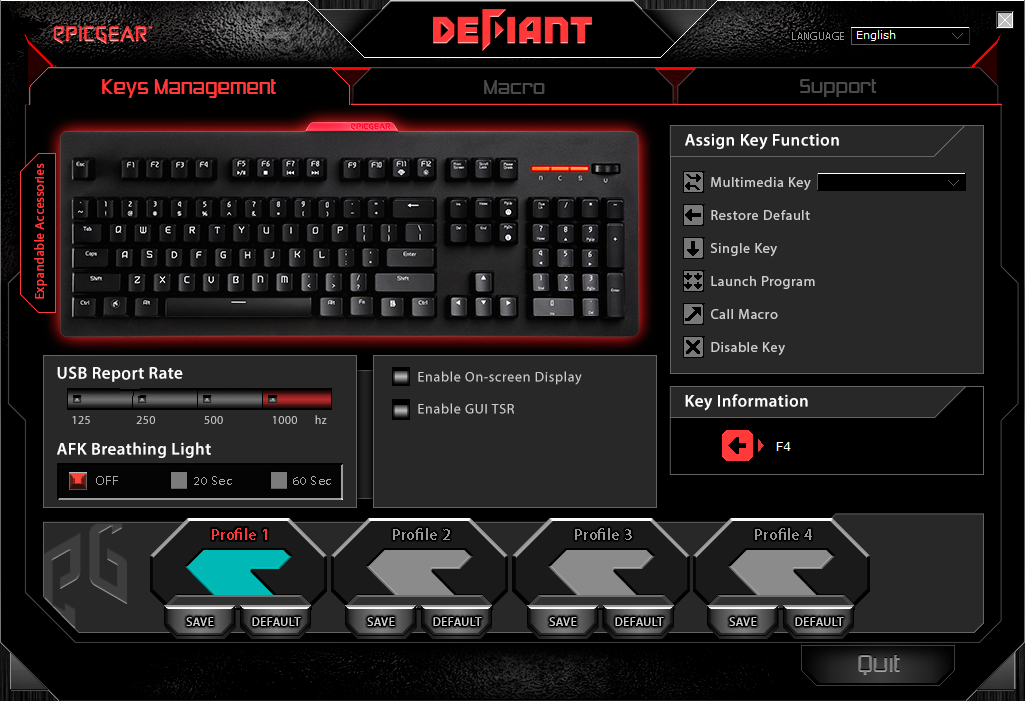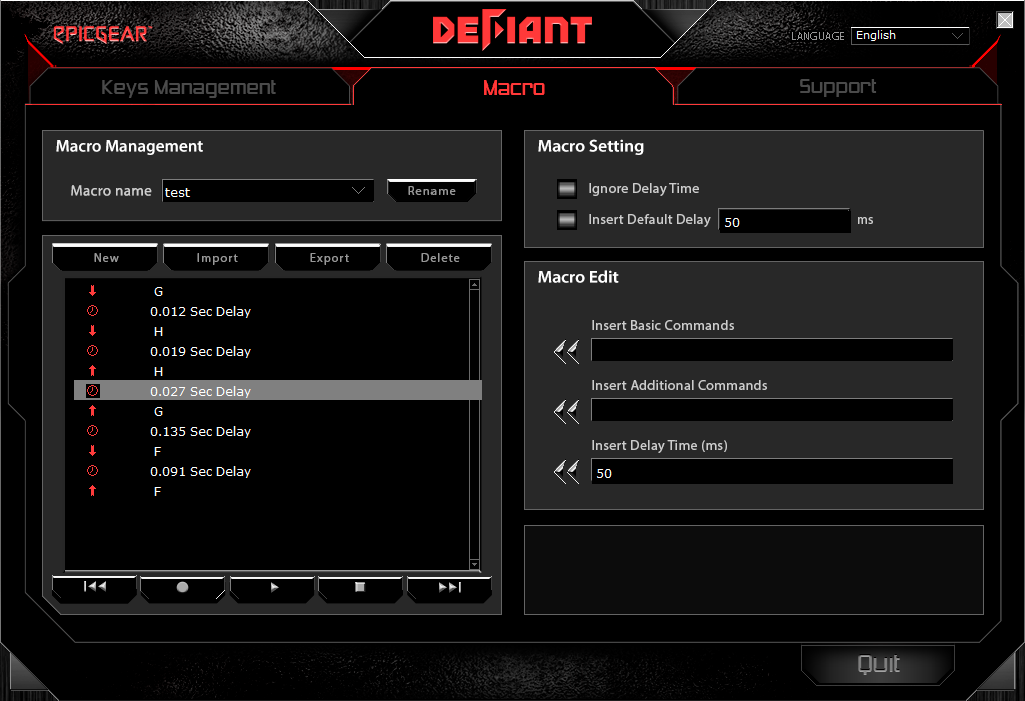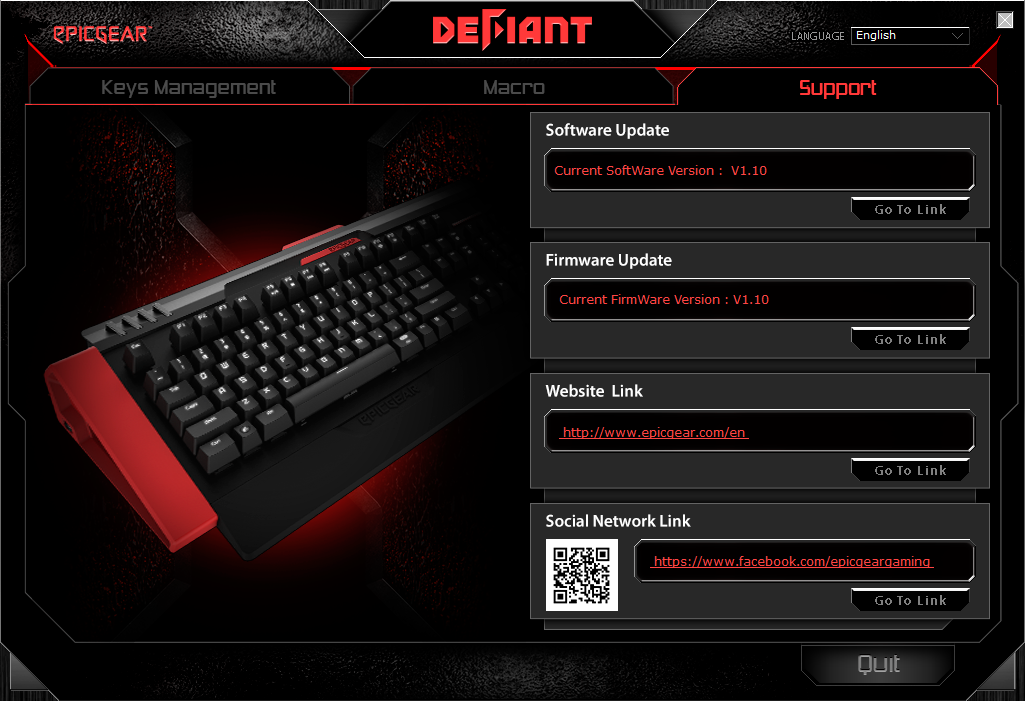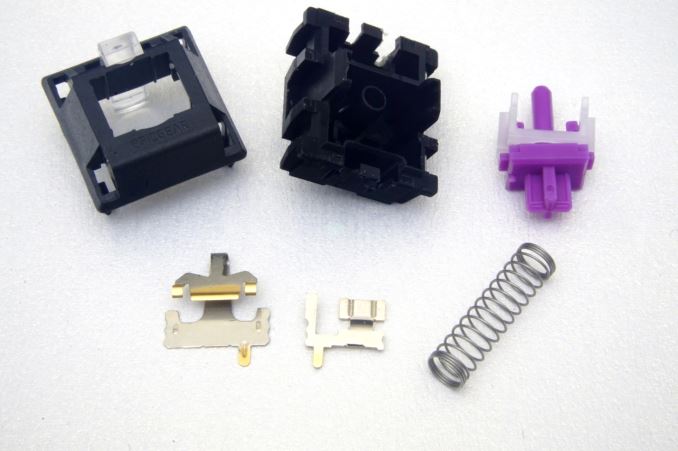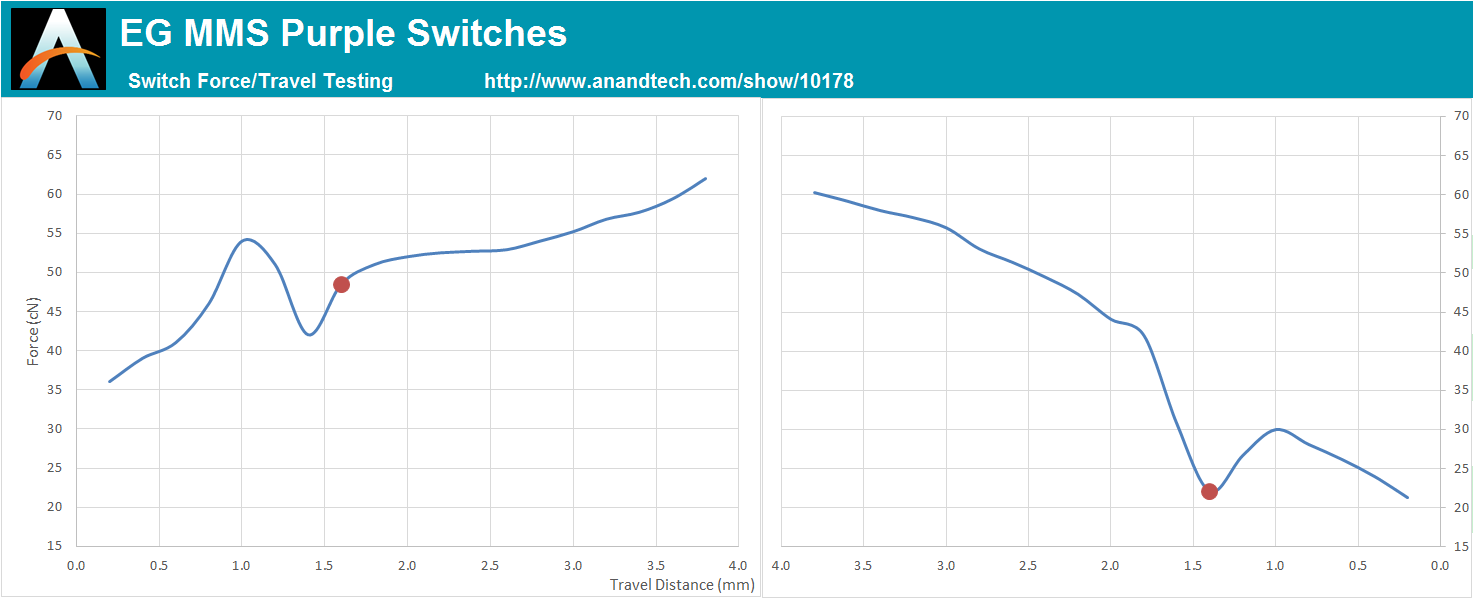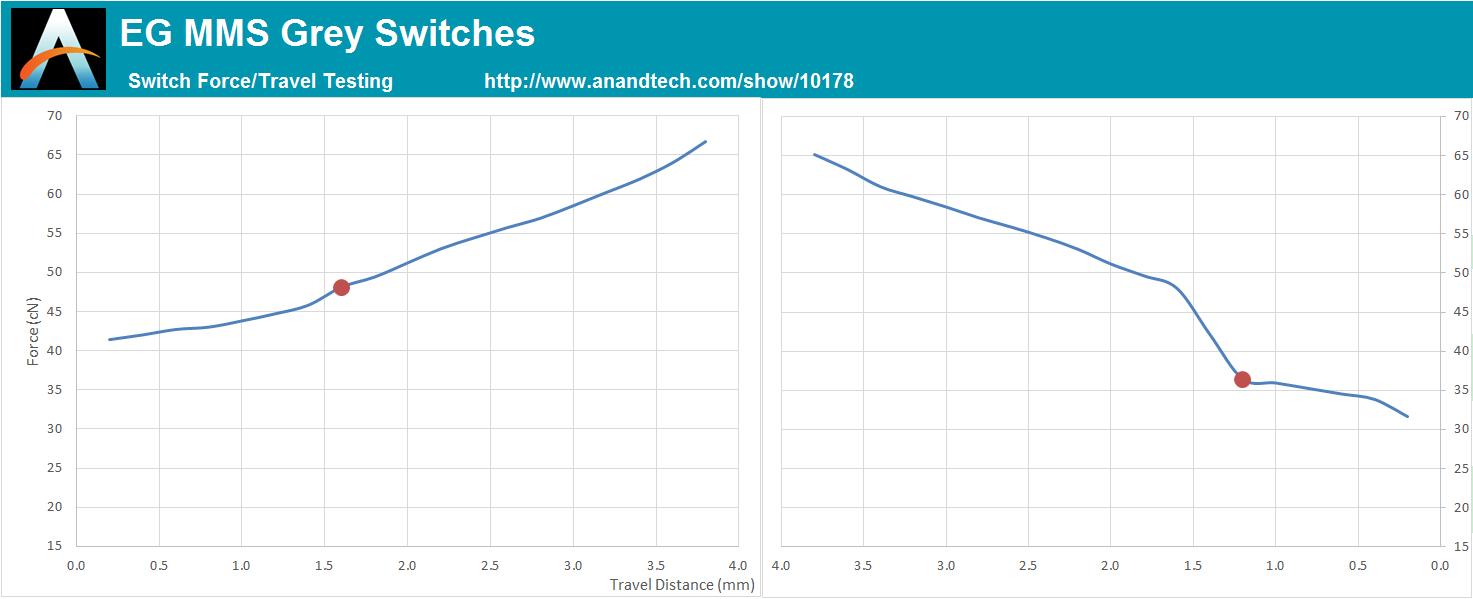
Original Link: https://www.anandtech.com/show/10178/the-geil-epicgear-defiant-mechanical-keyboard-review-custom-switches
The EpicGear Defiant Mechanical Gaming Keyboard Review
by E. Fylladitakis on May 11, 2016 9:00 AM EST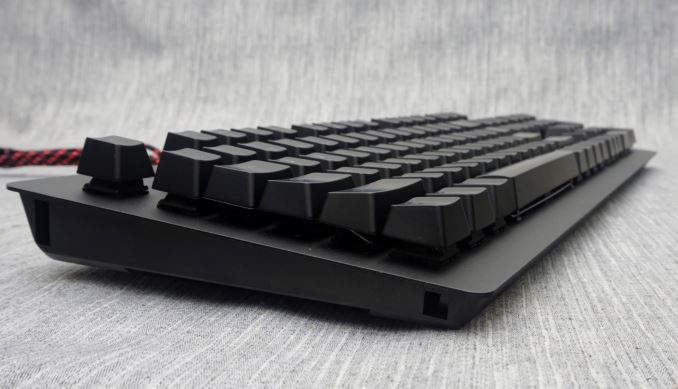
Mechanical keyboards are growing in popularity in the gaming market. As a result, we now have a number of products to choose from coming from dozens of manufacturers, making it difficult for newcomers to introduce a truly innovative product. Today we are having a look at the EpicGear Defiant, GeIL’s latest gaming keyboard, which is the first modular and expandable mechanical keyboard and comes with EpicGear’s own proprietary switches.
Introduction
Golden Emperor InternationaL, commonly known as GeIL, is one of the oldest and most well-known manufacturers of high performance computer memory products. The company was founded in 1993 and was almost completely focused on memory related products until 2009, where they had their first diversification attempt towards the power supply market. In 2011, GeIL established their own gaming peripherals brand, “EpicGear”, through which they offer a variety of gaming mice, keyboards, headsets and other peripherals.
With the recent high popularity of mechanical keyboards, nearly all gaming peripheral manufacturers are offering at least one such product. Every manufacturer is trying to innovate and differentiate, but this is becoming increasingly difficult as there have been a large number of new products released during the last couple of years. In order to offer something unique compared to the competition, EpicGear came up with a “fully modular keyboard” design, the Defiant. The Defiant can be expanded by attaching external accessories to it (palm/wrist rests, extra macro keys, etc.), but its mechanical switches can also be removed and replaced.
Packaging and bundle
EpicGear supplied us with a sample of the Defiant, as well as a pack of 24 MMS switches. The keyboard comes into a sizable cardboard box that offers adequate shipping protection. The artwork on the box is relatively simple, focused on a picture of the keyboard itself.
Alongside with the Defiant, EpicGear supplies a quick start guide, a keycap/switch removal tool and three large orange stickers with the company’s logo.
The extra switches pack includes eight switches of each of the three switch types that EpicGear is currently retailing, as well as one keycap/switch removal tool. EpicGear retails this pack and it is ideal as a sampling kit prior to purchasing the entire keyboard. If for some strange reason the user wants to mix the switch types on a single keyboard, it can also be used to replace some of the keyboard’s switches.
EpicGear is currently marketing Grey, Orange and Purple switches. We do not have the detailed specifications of EpicGear’s switches, but these essentially seem to be copies of the Cherry MX Red, Brown and Blue switches respectively, with the actuation distance reduced to 1.5 mm (the stock Cherry MX switches have an actuation distance of 2 mm) and their life span allegedly increased from 50 million keystrokes to 70 million keystrokes. We test all three sets of keys in this review and produce our own comparason force diagrams.
The EpicGear Defiant Mechanical Gaming Keyboard
The design of the Defiant is minimalistic, with the top of the keyboard being a flat anodized black aluminum plate. The bottom half of the keyboard is plastic, with an orange rubber cable support on the back of the keyboard. The company’s logo is engraved onto the rubber support. It is a standard 104 keys ANSI layout keyboard with a 6.25× Spacebar and seven 1.25× bottom row keys. The keycaps are made from ABS plastic and have large, futuristic characters.
With the exception of the volume control wheel at the top right side of the keyboard, there are no extra macro/media keys on the Defiant. The metallic wheel is very robust and also works as a button that can be used to mute the system. For additional functions, EpicGear replaced the left Windows key with a Fn key featuring the company logo. By holding the Fn key pressed, the F5-F8 keys can be used for media functions, PgUp/PgDn change the key rollover limit between six and n (infinite) keys and F11/F12 keys can be used for special backlighting programming functions.
For some strange reason, EpicGear engraved their logo across the entire underside of the keyboard. There are five anti-skid pads, plus two on the height adjustment feet.
There are no USB pass through ports or other extra buttons on the Defiant by default. EpicGear will be providing modular accessories for the keyboard in the nearby future, but we cannot comment on them as none are ready at the time of this review. Some of these accessories are wrist rests, extra panels with macro/programmable keys and rear bumpers with dedicated media keys and USB ports. How these will be attached on the main keyboard is a mystery. There are openings on every side of the keyboard for the accessories to latch into but there are no connectors, leaving us to assume that every accessory will be having its own cable and the openings are simply for attaching them.
The Defiant features white LED backlighting that is being well applied beneath the keycaps, with minimal light spilling around the keys. All of the keys are backlit, but the Fn and PgUp/PgDn buttons also serve as indicators and are being illuminated only when they are activated.
As we mentioned in the previous sections, EpicGear is using their own proprietary mechanical switches on the Defiant. We received our sample with Purple switches, which are similar to Cherry’s MX Blue switch. The manufacturer of these switches is a mystery, as we could not identify the OEM and GeIL did not want to share this information either. Their plastic body is a direct copy of the Cherry MX switch, but they are most definitely not made by Cherry. The use of bar stabilizers for the larger keys hints that as well, as Cherry is always using their patented cross supports.
With the top cover removed, and the switches along with it, we can have a look at the PCB of the Defiant. There are two gold plated contacts and one LED beneath every switch. Once a switch is attached, its two pins touch these contacts and the LED illuminated the transparent top part of the switch. Unfortunately, if an LED dies, replacing the switch is not going to help.
The heart of the Defiant is a Holtek HT32F1755 ARM processor. It has a maximum frequency of 72 MHz and 32 KB on-chip RAM, as well as 127 KB flash memory. A Holtek HT1632C driver is being used for the LEDs.
Quality Testing
In order to test the quality and consistency of a keyboard, we are using a texture analyser that is programmed to measure and display the actuation force of the standard keyboard keys. By measuring the actuation force of every key, the quality and consistency of the keyboard can be quantified. It can also reveal design issues, such as the larger keys being far softer to press than the main keys of the keyboard. The actuation force is measured in Centinewton (cN). Some companies use another figure, gram-force (gf). The conversion formula is 1 cN = 1.02 gf (i.e. they are about the same). A high quality keyboard should be as consistent as possible, with an average actuation force as near to the manufacturer's specs as possible and a disparity of less than ±10%. Greater differences are likely to be perceptible by users. It is worth noting that there is typically variance among keyboards, although most keyboard companies will try and maintain consistency - as with other reviews, we're testing our sample only.
The machine we use for our testing is accurate enough to provide readings with a resolution of 0.1 cN. For wider keys (e.g. Enter, Space Bar, etc.), the measurement is taking place at the center of the key, right above the switch. Note that large keys generally have a lower actuation force even if the actuation point is at the dead center of the key. This is natural, as the size and weight of the keycap reduces the required actuation force. For this reason, we do display the force required to actuate every key but we only use the results of the typical sized keys for our consistency calculations. Still, very low figures on medium sized keys, such as the Shift and Enter keys reveal design issues and can easily be perceptible by the user.
We tested the EpicGear Defiant with its stock EG Purple switches. The performance of EpicGear’s switches looks close to Kailh’s, but there is a significant difference - the variation is not evenly distributed. EpicGear’s Purple switches tend to have a lower actuation force than the rated 50 cN, which can be seen by the average of 47.9 cN that we had over the main keys. The disparity away from this average is high, reaching ±9.97%. Due to the high disparity and the low average, we have keys with readings over 10% lower than the manufacturer’s 50 cN specification. The difference is not dramatic and it is unlikely that a person can discern it by touch, but we would definitely prefer to see Cherry MX consistency figures for those that demand a finely tuned package.
Software
The software package of the Defiant is relatively simple and easy to use. It is divided into three tabs but most of the options can be found in the first tab, called “Key Management”. From this tab, the user can individually program every key of the keyboard and up to four different keyboard profiles. The keys can be reprogrammed to execute simple keystrokes, multimedia functions, macros or launch external applications.
The ability to launch external applications will be very useful for gamers, as the macro recording capabilities of the software are basic. Macros can be programmed via the second tab of the software, but the software supports only keyboard keystrokes. There are no options to add any kind of mouse movements or clicks. At least the software allows some basic editing of the Macros after they have been created (unlike some other bundled keyboard macro software), but we suspect that the majority of advanced gamers who require complex macros will be forced to use third party software.
The “Support” Tab of the software is the most basic, linking to the company’s website and allowing the user to check for software and firmware updates.
EpicGear EG MMS Switches
Since the company was kind enough to provide us with a sample kit of their switches, we went ahead and had a closer look at their construction and individual characteristics. Unfortunately, even after tearing the switches apart, we were unable to discern anything that would give us a hint as to who the manufacturer of these switches might be. Because of the body being a direct copy of Cherry’s design, it is highly unlikely that these switches are being made by Kaihua/Kailh or Gaote, as they are using their own body designs. Their internal design of the straight gold-plated contact area does not match any Gateron, Alps or Trantek designs that we have seen to this date either. EpicGear claims that this design is proprietary and patented, therefore we expect that their manufacturer has an exclusive partnership with EpicGear and we are not going to see these switches on any other products.
The actuation distance of these switches has been reduced to 1.5 mm and they can allegedly survive 70 million keystrokes. We have no means of actually testing that, but we feel that these figures are being greatly exaggerated. In order to reach 70 million keystrokes, a user would have to press one single key nearly 10.000 times every day for 20 years. Even Cherry’s 50 million keystroke rating is absurd. The alloy that the switches are made of is most likely going to corrode much before the switches get destroyed from mechanical stress.
Since there are no travel/force diagrams available for these switches, we decided to use our analyser and composed them ourselves. The three following figures show the force/travel diagrams that we extracted, with the red dots showing the actuation/reset points. We can see that we usually get actuation points about 1.6 mm down the travel distance and force readings slightly lower than the 50 cN rating of the switches. Note however that the following diagrams were created by testing four of each switch type for 20 steps between 0 and 4 mm, which is the travel distance of the keys. As we know from our quality testing sections, real products have variations; therefore, these should be considered as indicative, not absolute.
The force diagram on the left shows the switch being depressed, and on the right is the switch being released. Click each image for a closer examination.
The orange and grey switches are effectively mirror images of each other for the depress and release, with a minor deviation in the release of the grey. The purple switch however gives a pair of profiles quite different, providing a sharp release point when the key feels light.
Conclusion
I always try to use every keyboard that we review as my personal keyboard for at least a week. My typical weekly usage includes a lot of typing (about 100-150 pages), a few hours of gaming and some casual usage, such as internet browsing and messaging. The EG MMS Purple switches that our Defiant sample came with were very good for such tasks, as tactile switches are great for typing. I would personally prefer EG MMS Orange switches, because the audible actuation of the EG MMS Purple (much like the Cherry MX Blue counterpart) can become annoying when working late at night, especially if there are others nearby.
As far as gaming goes, the EpicGear Defiant feels a little inadequate without any of its accessories. It is very responsive and feels solid as a keyboard, but I found it very tiring to use it for long periods of time without a wrist/palm rest. This is not a problem for low profile keyboards, but high profile of mechanical keyboards makes the use or a palm rest a necessity for long gaming sessions. The programmability is certainly convenient, but the software that comes with the Defiant is far too simple and its macro recording capabilities are minimal. Its modular accessories can improve the appeal that the Defiant has towards gamers significantly, but we have to wait for their release to check on their quality, practicality and cost.
Aside from the optional accessories, the other primary marketing point of the Defiant is the modular switches. This is interesting as a concept but we feel that few users will find it actually practical. One of the very few applications that we can think of is to have a Defiant with Orange/Grey switches and replace a few with Purple switches so as to receive audible feedback from selected keys, or to replace a few Purple switches with Grey switches so as to have quiet gaming sessions. Mixing all three kinds of switches, from my perspective, onto a single keyboard does not seem practical in any way. It would be interesting if the LED could be removed alongside the switch, allowing the replacement of a bad LED/switch combination, but the LEDs are soldered onto the main PCB. A damaged/dead LED is a far more frequent mechanical keyboard fault than a broken switch. Mechanical switches are extremely reliable and EpicGear rates their switches as more reliable even than Cherry’s.
The ability to remove the switches also raises reliability concerns. The Defiant feels solid, but we are working on a brand new keyboard. Having the plastic frames of the switches locking onto an aluminum plate and their contacts simply pressing against other contacts on the PCB may be problematic for the long-term reliability of the keyboard, especially if the switches are being replaced frequently (which we admit, is not a typical use case). The contacts are gold plated, but the 30 μm plating at the contact points can be very easily damaged and that will inevitably lead to corrosion. Regarding mechanical cohesion and reliability, we believe that such problems will be infrequent and that the Defiant should last through several years of everyday use, but its solidity simply cannot compare to traditional designs.
One of the greatest advantages that the Defiant has is its retail price. The MSRP price of the Defiant is $90, which already is a reasonable price for a backlit, programmable mechanical keyboard. When it hits the retail market, it is almost guaranteed that competition will bring the retail price of the Defiant at least 10% down. That puts the Defiant, a keyboard that can be upgraded/modified at whim, at a strong advantage against its competition. Assuming that the retail price of the accessories will also be reasonable and useful, they should allow each user to customize the Defiant according to their needs. This gives the keyboard the potential to offering significant value to those that are attracted by the subtle design of the Defiant and the concept of a customizable, modular keyboard.

